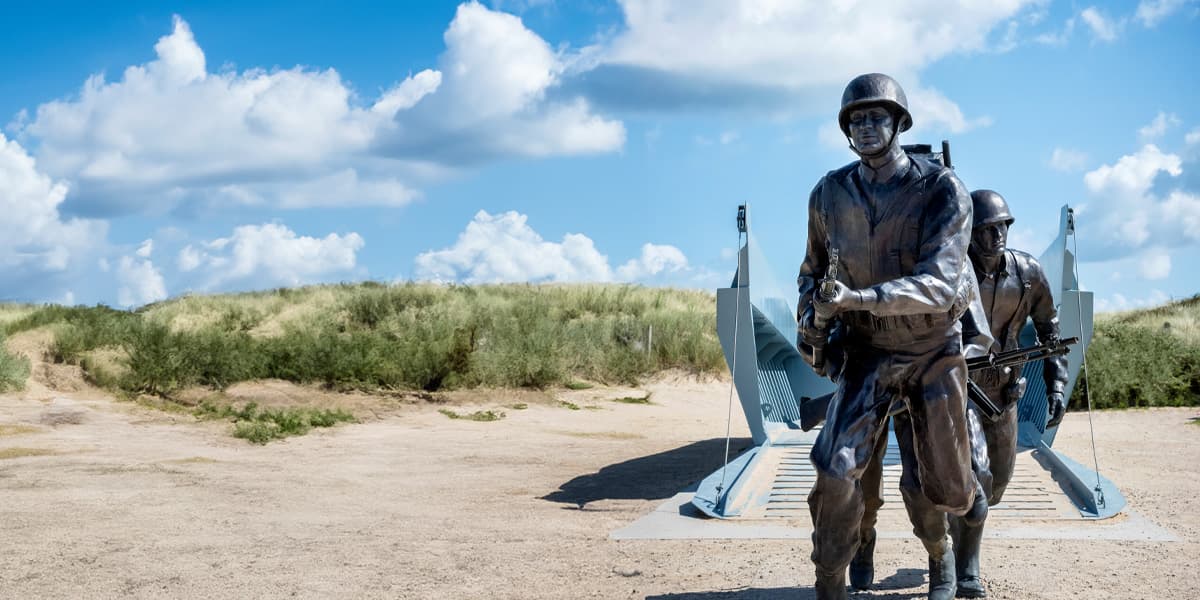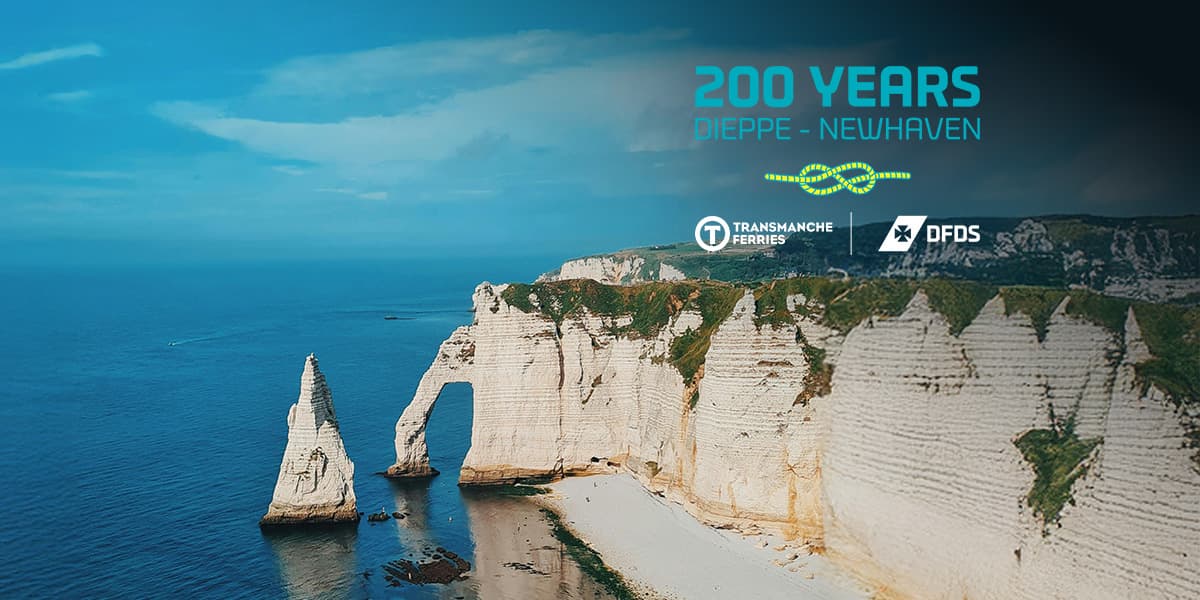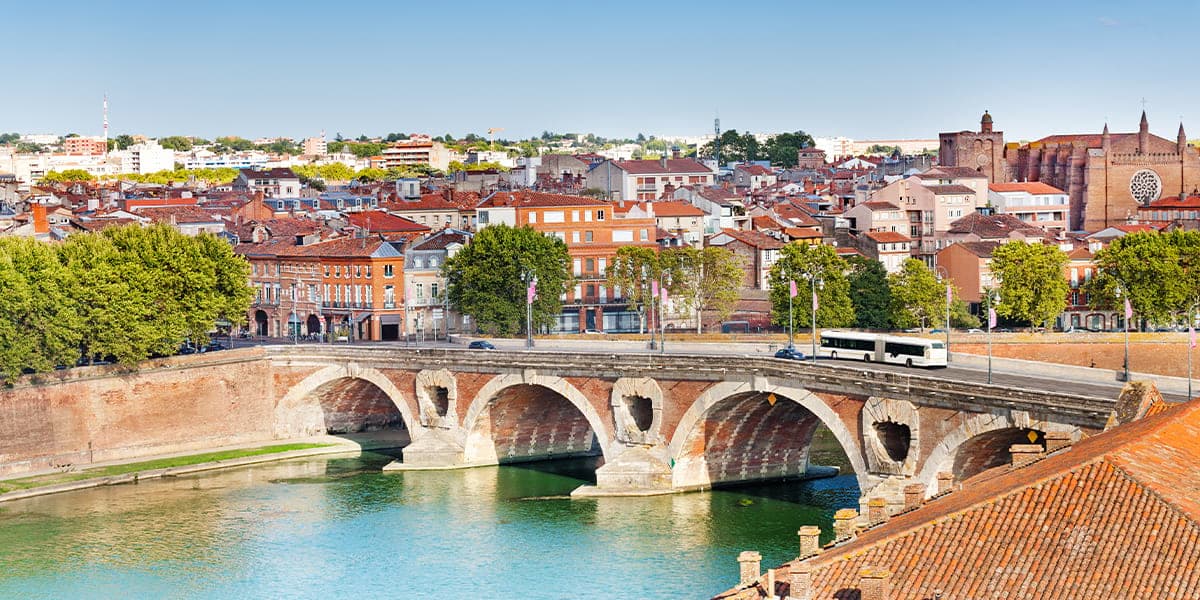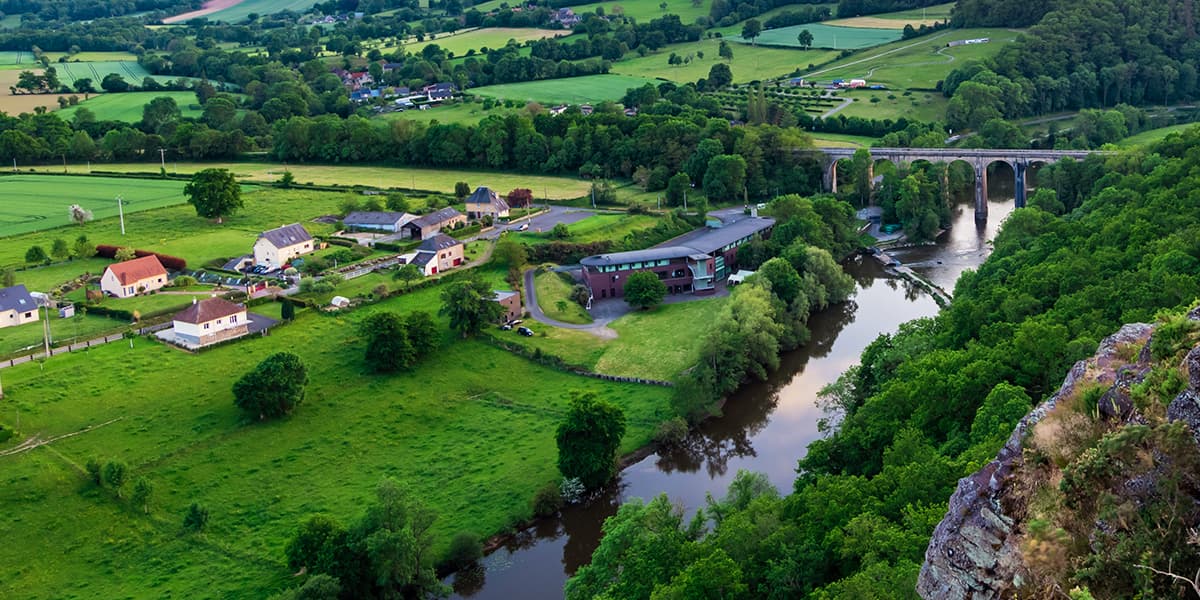Your Essential Travel Guide to the D-Day Beaches

Discover D-Day Beaches
The D-Day landings on the 6th of June 1944 were the largest seaborne invasions in history, carried out by the Allies in Operation Overlord. The Battle of Normandy was mainly fought along the shores of Calvados, Manche and Orne, today known as the D-Day beaches. Stretching for over 70km, they’re home to memorials and museums to commemorate past events.
Planning a trip to Normandy to learn more about D-Day? We’re here to help. Our day-to-day itinerary of the D-Day beaches takes you through must-see landmarks for an unforgettable experience.
Travelling to Normandy
Travelling to Normandy with DFDS is easy. Our France routes operate daily sailings, so you’re sure to find a suitable time.
Our 2-hour Newhaven to Dieppe ferry crossing provides direct access to kickstart your D-Day Beaches itinerary. The drive from Dieppe Port takes around 2 hours. Our Dover to Calais and Dover to Dunkirk routes are also ideal, offering passengers live entertainment, duty free shopping and excellent dining options.
Day 1: UK - Caen
Sail aboard one of our ferry crossings to France and prepare for a memorable experience. Your trip will begin in Caen, about 3.5 hours drive from Calais and Dunkirk Ports and 2 hours from Dieppe.
Often called the ‘archetype of Normandy’, Caen is a picturesque coastal city with plenty to see. It boasts beautiful architecture built during the reign of William the Conqueror, including the Grand Abbey and Caen Castle. The town was severely damaged during World War II, and much of it was rebuilt in Caen stone.
Must-see D-Day landings landmarks include:
- Memorial for Peace
- Pegasus Bridge
Day 2 : Caen - Bayeux
Distance: 30 miles Spend your second day exploring Bayeux, a short drive from Caen. This charming commune was a transit hub for soldiers and civilians during WWII, thanks to its proximity to the D-Day beaches. Soon after it was released by the SS, French general Charles de Gaulle gave his first speech as the leader of liberated France.
D-Day landmarks in and around Bayeux include the following:
Day 3: Bayeux - West D-Day Beaches
Utah Beach
Distance: Bayeux-Utah Beach, 58 miles
Utah Beach is a little further from Bayeux, but it’s worth the extra miles. Utah was the code name for one of the five Operation Overlord’s sectors, stretching from Sainte-Marie-du-Mont to Quinéville. The United States Army undertook the landings on Utah through sea transport, mine sweeping and a naval bombardment force to secure a beachhead on the Contentin Peninsula.
D-Day landmarks around Utah Beach include:
- Utah Beach Landing Museum
- Utah Beach D-Day Landing Memorial
- WN9 St Martin de Varreville
Day 3: Bayeux West D-Day Beaches
Omaha Beach
Distance: Utah Beach-Omaha Beach, 48 miles
From Utah, head towards Omaha Beach. You may feel like you’ve seen it before; the beach was used as the opening scene of the iconic film Saving Private Ryan. The United States Army aimed to secure a beachhead between Port-en-Bessin and the Vire River to link with the British at Gold and VII Corps at Utah.
Must-see D-Day landmarks include the following:
Day 4: Bayeux East D-Day Beaches
Gold Beach
Distance: Bayeux-Gold Beach 16 miles
On your fourth day, head east towards Gold Beach, the most central of the five Operation Overlord’s sectors. Located between Port-en-Bassin and the Lieu-dit La Rivière, Gold was the responsibility of the British Army. The aim was to secure a beachhead and capture Arromanches and Bayeux, establishing contact with the Americans at Omaha and the Canadians at Juno.
D-Day landmarks within the area include the following:
Day 4: Bayeux-East D-Day Beaches
Juno Beach
Distance: Gold Beach-Juno Beach, 6 miles
Juno is the code name for the only Canadian sector, spanning from Courseulles to Saint-Aubin-sur-Mer. The First Canadian Army had to join the British, who were landing both sides at Sword and Gold, to establish a bridgehead to Caen. Juno suffered the most casualties after Omaha, with over 1,300 soldiers losing their lives.
Must-see D-Day sites here include the following:
Day 4: Bayeux East D-Day Beaches
Sword Beach
Distance: Bayeux-Gold Beach 16 miles
On your fourth day, head east towards Gold Beach, the most central of the five Operation Overlord’s sectors. Located between Port-en-Bassin and the Lieu-dit La Rivière, Gold was the responsibility of the British Army. The aim was to secure a beachhead and capture Arromanches and Bayeux, establishing contact with the Americans at Omaha and the Canadians at Juno.
D-Day landmarks within the area include the following:
Day 5: Bayeux, Dunkirk
Distance: 415 miles
Despite not being part of the D-Day landings, Dunkirk was the scene of a heroic military operation during WWII: Operation Dynamo. This involved the safe evacuation of over 300,000 Allied troops. Visit the Dunkirk War Museum on your way back to Dunkirk Port to learn more about the evacuation.
Our Dunkirk to Dover ferry crossing will take you back to the UK in 2 hours.
Must-see D-Day sites here include the following:
Our routes

Dover-Calais Ferry Crossings
Hop aboard our most popular ferry crossing, Dover to Calais, and arrive in Calais in just 100 minutes. There are many ways to spend time onboard, from dining to duty free shopping.
From
£89
per car + up to 4 people, one way*

Dover-Dunkirk Ferry Crossings
With a journey time of just 2 hours, our Dover to Dunkirk ferry crossing gives you access to Belgium, France, the Netherlands and more. Enjoy dining and duty free shopping on board.
From
£89
per car + up to 4 people, one way*

Newhaven-Dieppe Ferry Crossings
Arrive in Dieppe in 5 hours with our Newhaven to Dieppe ferry crossing. Enjoy our facilities while you sail, including restaurants and an onboard shop.
From
£100
per car + 4 people, one way*

Newcastle - Amsterdam ferries
Your trip to Europe starts with DFDS! Book now to secure your place on board for summer adventures, and travel relaxed with your own car + unlimited luggage.
15%
off 2026 sailings
Travel Guides

Toulouse
Visit Toulouse in southwestern France to explore well-preserved medieval history, architecture and a deeply rooted local identity.

Reims
Unleash the magic of Reims, France with our ultimate travel guide - immerse yourself in enchanting sights, award-winning dining, and unforgettable Champagne tours.

Paris
Explore culture, art and magnificent architecture in the French capital.

Normandy
Travel by ferry to Normandy and explore historical places to visit including picturesque towns and stunning coastline.

Nice
A picturesque coastal city in southern France, known for beautiful landscapes and pleasant Mediterranean climate.

Lyon
Explore historical Lyon which offers interesting architecture, cosy old town and other beautiful sights.
Prices are subject to availability. Telephone booking fees apply. Terms and conditions apply.